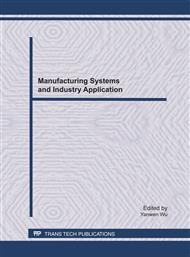p.493
p.499
p.504
p.510
p.516
p.521
p.525
p.530
p.536
Modeling Microfibril Angle of Larch Using Linear Mixed-Effects Models
Abstract:
Earlywood microfibril angle (MFA) was determined at each growth ring from disks at breast height (1.3 m) from 6 dahurian larch (Larix gmelinii. Rupr.) trees grown in northeastern China. Significant variation in microfibril angle was observed among growth rings. MFA at breast height varied from 7.5°to 21.5°between growth rings and showed a descreasing trend from pith to bark for each tree. A second order polynomial equation with linear mixed-effects was used for modeling earlywood MFA. The LME procedure in S-Plus is used to fit the mixed-effects models for the MFA data. The results showed that the polynomial model with three random parameters could significantly improve the model performance. The fitted mixed-effects model was also evaluated using a separate dataset. The mixed model was found to predict MFA better than the original model fitted using ordinary least-squares based on absolute and relative errors.
Info:
Periodical:
Pages:
516-520
Citation:
Online since:
June 2011
Authors:
Price:
Сopyright:
© 2011 Trans Tech Publications Ltd. All Rights Reserved
Share:
Citation:


